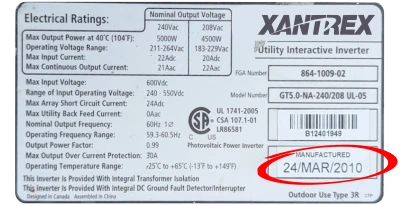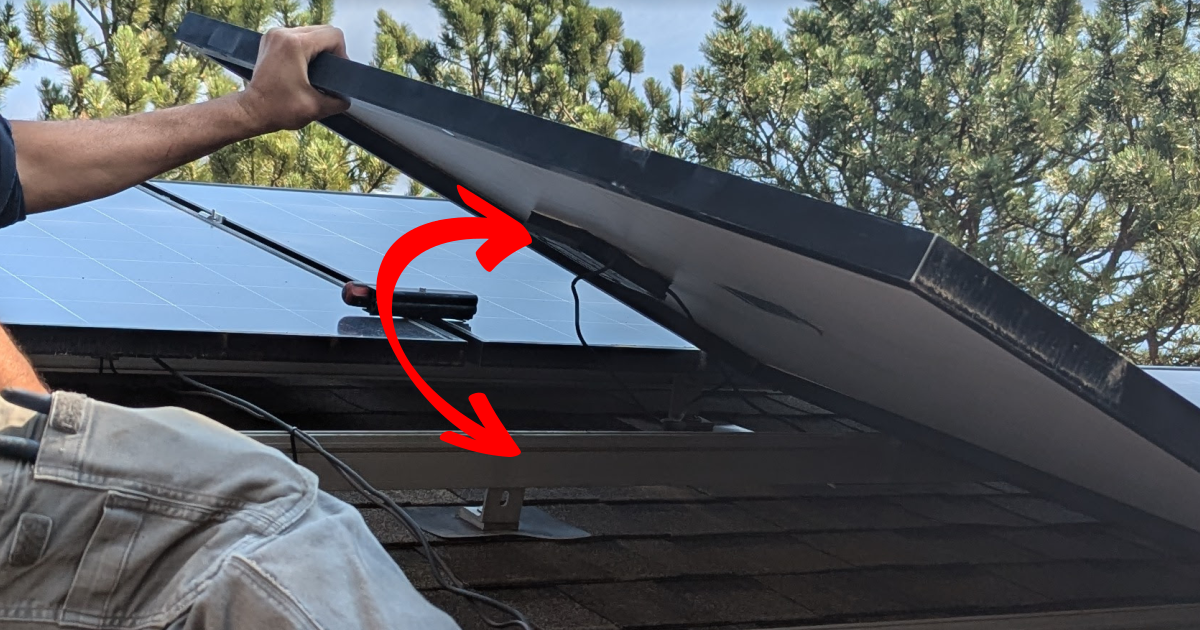

Ground Fault reset system
RED LED illuminatedGround fault condition detected on the PV array
The inverter has detected a ground fault, indicating that current is leaking from the DC circuit to the ground, which poses a safety risk.

gt
A ground-fault displayed could indicate a internal faiilure in the inverter, but a actual ground-fault presents a potential safety hazard. Refrain from further action and contact a qualified technician.
Tips for Qualified Persons
The following procedures involve safety risks and potential for equipment damage. They are intended only for qualified personnel trained to identify and avoid the hazards that exist, and possess the appropriate PPE. These are general tips to aid professionals in troubleshooting, not instructions or directives to perform them.
We assume no liability for injury or damage resulting from their use.
- Inspect all terminal connections for proper torque, signs of overheating, or physical damage.
- Isolate the DC input circuits and verify voltage from positive to negative, ensuring correct polarity (If not isolated, combined strings may mask reverse polarity in open-circuit conditions).
- Verify that both POS-to-GND and NEG-to-GND voltages are 0V.
- If any reading shows significant voltage (e.g., >10V), a ground fault is likely present in that string.
- For addtional guidance on locating a ground-fault in an array, please see this article:
Use caution: if a ground fault is present, normally unenergized metal parts may be energized. Ensure PPE is worn and no contact is made with grounded surfaces while testing.
Shut down both AC and DC disconnects and wait for the inverter to fully discharge before accessing the lower wiring compartment.
Using a multimeter, perform the following checks:
If voltage to ground is present on the DC circuits, inspect junction boxes, wire terminations, and conduit for moisture ingress, damaged insulation, or improper strain relief that could cause leakage to ground. Inspect array wiring for any pinched wires or rodent damage. Work through the system isolating strings and measuring voltage to ground to locate the faulted string.
If no volatge from DC ciruits to ground is detected, and all other checks pass, the inverter itself has likely failed. As the Xantrex GT series is no longer supported, replacement is typically the recommended solution.
In January 2011, Schneider Electric announced a voluntary recall of the Xantrex GT inverter that affected 25,000 units, manufactured between 2005 and 2010.
Check if your inverter was affected by this recall using the Xantrex Recall Lookup Tool

Xantrex GT series inverters were originally sold with a standard 10-year warranty. These inverters were popular in the late 2000s and early 2010s, primarily under the Xantrex brand prior to the company's acquisition by Schneider Electric.
The label is typically located on the top of the inverter, which includes the manufacture date as shown above. Not all inverters had this same label and many have since deteriated in the elements. After the acquisition, it is unclear whether Schneider Electric formally honored all prior warranties, regardless all GT units are now well beyond their original coverage period. Warranty support for these inverters is no longer active (as far as we are aware).
For questions related to legacy product warranty and support, you can contact Schneider Electric's solar support team at solar.se.com/us/en/support/ or call 1-833-391-8640
Xantrex Technology Inc. was founded in 1983 in British Columbia, Canada, and quickly became a leader in power electronics. The company specialized in advanced inverter and charger systems for renewable energy, marine, RV, and industrial applications. Over the years, Xantrex developed a reputation for building durable and reliable off-grid and backup power products.
In the early 2000s, as the residential solar market began to expand, Xantrex introduced its GT series of grid-tied solar inverters. These units, including models like the GT2.8, GT3.0, GT3.3, GT3.8, and GT5.0, were designed for residential and small commercial use.
The GT series was known for its fanless cooling design, which reduced noise and the need for maintenance, and for its simple LED display with basic status information. Certain models also supported advanced communication options including RS-232, Modbus, and even Zigbee, which was notably used in installations provided by SolarCity and Tesla.
Despite widespread adoption, the GT inverters developed a history of common failures over time, particularly related to degraded capacitors and controller board faults. In 2011, Schneider Electric issued a recall for certain GT inverter models that affected 25,000 units manufactured between 2005 and 2010.
Xantrex was acquired by Schneider Electric in 2008 for $489M. Schneider continued to manufacture and support the GT line for several years but eventually discontinued it as newer inverter technologies and more sophisticated monitoring features became industry standards. Schneider later introduced the Conext series for battery systems as a successor but eventually phased out much of its residential solar inverter line.
Today, the Xantrex brand is still in use, but its focus has returned to mobile and off-grid applications for RV, marine, and industrial power systems. The GT inverter line is considered a legacy product, no longer in production and with limited support, although it was a well-regarded device, and many units remain in operation today, many years later.
The best point of contact for service or repair issues is your original installer.
If your installer is no longer available, you can reach Schneider Electric’s solar support team for assistance with legacy Xantrex GT inverters:
Schneider Electric Solar Support
You can also call Schneider directly at:
1-833-391-8640
Note: Xantrex GT inverters are legacy products that are no longer supported under warranty, but Schneider may be able to offer guidance, documentation, or suggest third-party repair options.
DENVER RESIDENTS: Is your system located in the Denver, CO metro area? CONTACT US

